Now it's your turn! It's time to get hands-on with sustainability through fun activities that you can do online and at home. Join the City Nature Challenge. Learn about earth science and conservation with the College of Science and Technology's FunScience Demos! Participate in projects throughout Pennsylvania and beyond with SciStarter during Citizen Science Month!
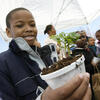
In honor of Earth Day’s 51st birthday, Environment America has put together a list of 51 environmental activities kids can do to celebrate Earth Day.
The list, which links to further information on subjects throughout, is broken down into six different areas: learn about solutions to climate change; learn about ways to reduce waste; learn about plants; learn about waterways, parks and conservation; learn about and protect birds, bees and other wildlife; and create a healthier home and community.
Activities range from making your own solar oven from a pizza box to creating a bird feeder out of an apple, peanut butter and birdseed. Educational opportunities vary from calculating your family’s carbon footprint to making your garden or neighborhood pollinator friendly.
Make It a Summer of STEM at Temple Ambler!

Temple's Office of Non-Credit and Continuing Education will be offering a Summer STEM Academy for middle schoolers from August 2 to August 12! Embark on engaging challenges in mathematics, science, and computer science. Math challenges will be individualized based on the current level of achievement and will include fun applications and incentives. The science program will focus on “neighborhood ecology.”
The underpinning life and physical science will be incorporated as students make measurements on samples collected using simple and safe materials. Data collected from students will be shared and discussed. Our computer science curriculum will incorporate instruction in Python programming and applications to “Big Data,” appropriately sized data for middle school students. Finally, multiple robotics challenges will be offered!
Ready for a FunScience Scavenger Hunt?
It's time to dive in to FunScienceDemos, brought to you by Temple University's College of Science and Technology and TuTeach. This time you are the science sleuth! Can you figure it all out? If you are a teacher in need of science readings, writing prompts and more, they also offer a comprehensive companion site. These videos are shared with permission from the College of Science and Technology, TuTeach and the incredible FunScienceDemos team.
Oil and Water
Naomi colors some water blue with food coloring and then adds some yellow Canola oil. Watch what happens. Can you explain it?
Spinning Egg
Jared invites us on a scavenger hunt to solve this problem: Why does a raw egg keep spinning even after you stop it? Think you know?
Deer Antler
Just walking in the woods near his house, Jared found something interesting on the ground. Can you help him figure out why this would be there?
Apple Dunk
Jared does a cool trick. But is it a trick or science! Why does the apple fall straight down?
Tree Bark Attack!
FunScience Scavenger Hunt challenges you to a tree mystery! Jared gives us a few clues as well. Can you figure it out?
Reading is Environmental!
The Temple University Ambler Library is a treasure trove of information about everything from sustainability, the environment and citizen science to ecology, aquaponics and conservation (and everything in between).
For Earth Day, the Library has selected a few materials from the extensive repository of information held by the Temple University library system; including, of course, the Ambler Campus Library and online materials. Join them in celebrating Earth Day by discovering new books and articles! If you have questions, please contact sandi@temple.edu for more information or instructions for obtaining the online materials. Celebrate the earth and how we live upon it, use it, and better yet, give back to it!
NASA Citizen Science - Share the Science
NASA’s citizen science projects are collaborations between scientists and interested members of the public. Through these collaborations, volunteers (known as citizen scientists) have helped make thousands of important scientific discoveries. Want to work on some real NASA science? Visit NASA's comprehensive Citizen Science Projects webpage.
Make Your Own Observations
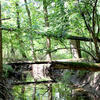
If you happen to be on campus observing wildlife, studying the plants and trees, or simply wandering in our gardens, why not engage in a little citizen science while you're here? You might come across any number of animals that depend on the creeks running through campus! Record your observations for the Temple Ambler Field Station and the Ambler Arboretum's new project page on iNaturalist! Any iNaturalist observation taken at the Ambler Campus will be automatically uploaded, which will prove invaluable for future campus research! iNaturalist shares your findings with scientific data repositories like the Global Biodiversity Information Facility to help scientists find and use your data. All you have to do is observe.
Making a Self-Portait Out of Foraged Materials
Join Environment America's Megan Severson, shares a history of Earth Day, and describes an activity suitable for the whole class. The video is followed by a set of discussion questions for the class. In this activity, she guides students in grades K through 3 in creating a self-portrait from foraged materials.
Sharing is for the Birds
EBird is a platform that allows birders the chance to share their birding knowledge with the world. Run by the Cornell Lab of Ornithology, users can easily create checklists of birds they have seen and upload those to the eBird platform. Once uploaded, these observations help researchers monitor current bird biodiversity, distribution, and abundance trends. With its easy to use collecting app, eBird can be used by novices, experts, and everyone in between. Visit here for a step-by-step guide on how to start collecting.
Map Those Invasives!
iMapinvasives is a platform that is focused on tracking invasive species throughout the North America. Each state can join the iMapinvasives network and create a custom list of species that are considered invasive in that area. Observations are shared with stakeholders throughout the state or region in order to coordinate control efforts and track the spread of invasion. The Temple Ambler Field Station currently has an active project tracking Spotted Lanternflys throughout our campus. With a dropdown menu of known invasive species preloaded on the app, observations are easy. Visit here for a step-by-step guide of how to start collecting.
For all “Budding” Citizen Scientists
Budburst, a project of the Chicago Botanic Garden, is a platform focused on bringing together educators, researchers, and citizen scientists. As a Budburst Partner, Temple Ambler Field Station has created a list of 10 commonly found plant species on our campus. With its hands-on guide to ecological observation, Budburst is the perfect place for new citizen scientists to learn the ropes. Plant observations, including features like flowers, leaf color, or fruits, are used by scientists to track plant life cycles. With a focus on education, Budburst also has plenty of resources for students of all ages. Visit here or a step-by-step guide on how to get started.
FEMA: Become a Disaster Master!
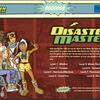
Emergencies and disasters can be scary, but there are ways to help you stay safe before, during, and even after a disaster. In these activities from FEMA and Ready.gov, you can play games to become a Disaster Master and learn how to build an emergency kit. In Disaster Master, you have to help the team! Will you know what to do? Make the right decisions and earn points to unlock new levels. But watch out! The wrong choice could end the game. Make it through all 7 levels plus a turn in the hot seat and become a Disaster Master! Print out chapters of your own graphic novel as you play.
FEMA: Build A Kit

How would you find out whether it was safe to play outside? Not from your TV or computer! Being prepared means having your own food, water, and other supplies to last for at least three days, and possibly longer if you are in a remote or hard-to-reach area. Remember that your kit will depend on your own needs. Once you take a look at the basic items, consider what unique needs your family might have, such as supplies for pets or seniors. In the Build a Kit Game from FEMA and Ready.gov, go through different locations with Gayle and her friends to find what you need for an emergency kit. Have fun and build a checklist along the way.
Be Outdoors: Tips and Resources for Families
Looking for ideas on where to take your kids outdoors close to home? Not sure how to get started? The Appalachian Mountain Club provides a wide variety of information and resources to help you plan the perfect outdoor adventure, from trip ideas to gear advice to outdoor safety. Visit here for more information. Photo by Raun Kercher, Appalachian Mountain - Club Delaware Valley Chapter.
Conduct a Home Energy Audit
In this video, Environment America's Megan Severson, shares a history of Earth Day, and describes an activity suitable for the whole class. The video is followed by a set of discussion questions for the class. In this activity, she guides students in grades 7 through 12in how to conduct a home energy audit.
Connecting People With Scientists
Earthwatch connects people with scientists worldwide to conduct environmental research and empowers them with the knowledge they need to conserve the planet. Earthwatch volunteers work and learn alongside leading scientists in stunning natural settings, conducting real-world research on threatened and thriving species and habitats the world over. Learn more about Earthwatch's committment to education.
Education in Observation
Observation and collecting information and data is an essential part of citizen science. As an observer, you'll notice things you never saw before. According to Nature’s Notebook, a project of the USA National Phenology Network, a dedicated observer may notice "the slightest blush on a maple leaf that foreshadows the coming fall; the new, more vibrant feathers warblers put on days before mating; the swelling of a Palo Verde bean pod as it grows. You develop a more nuanced appreciation of our natural world. Nature's Notebook is an excellent tool in your citizen science toolbox!
Join the Cicada Safari!
Join Cicada Safari to help map the 2021 emergence of the periodical cicada Brood X. Simply download the free app from the Apple app store or Google play, then go on a safari to find periodical cicadas. Photograph and submit the periodical cicadas to Cicada Safari, and after the photos are verified, they will be posted to the live map. Cicada Safari was created by Dr. Gene Kritsky.
Monitoring the Monarchs
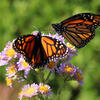
The Monarch Butterfly observation season in this part of the country will soon begin! In this age of social distancing, collecting information about monarch migrations has become more complex. Monarch Watch wants you! Monarch Watch is seeking the immediate assistance of hundreds of monarch enthusiasts — citizen scientists — in collecting observations of adult monarchs in their area during the spring and fall. This project is an attempt to assemble quantitative data on monarch numbers at critical times during the breeding season. The data from these observations will be used to assess their value in predicting trends in the population.
In Search of the Lost Ladybug
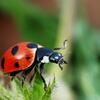
Across North America, ladybug species composition is changing. According to the Lost Ladybug Project, over the past 20 years native ladybugs that were once very common have become extremely rare. During this same time, ladybugs from other parts of the world have greatly increased both their numbers and range. The Lost Ladybug Project is asking you to join them in finding out where all the ladybugs have gone so they can try to prevent more native species from becoming so rare!
Take a Journey!
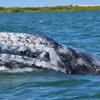
They say a journey of a thousand miles starts with one step. For bald eagles, monarch butterflies, gray whales, hummingbirds and much more, those journeys are vital for their continued survival! Journey North, a project of the University of Wisconsin-Madison Arboretum, is one of North America’s premiere citizen science programs for people of all ages. Journey North provides online tools to track migration and the seasons! The project has broad participation, with over 60,000 registered sites in the US, Canada, and Mexico — including families, teachers, schools, nature centers, professional scientists and novices. Reported sightings are mapped in real-time as waves of migrations move across the continent. People report sightings from the field, view maps, take pictures, and leave comments.
We Can All Lend a Hand!
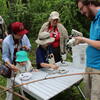
If you're seeking ways that you can engage in science and environmental projects in your community, SciStarter is an excellent repository of thousands of possibilities! SciStarter is an online community dedicated to improving the citizen science experience for project managers and participants. More than 3,000 projects and events are searchable by location, scientific topic, and age level. SciStarter also supports researchers in managing projects, including best practices for engaging participant partners. SciStarter also provides a great overview of citizen science. Here are just a few SciStarted projects to help you become a citizen scientist and a water quality champion!
Marine Debris Tracker
Join SciStarter in creating a bigger picture of the plastic pollution crisis by downloading the app today and reporting litter wherever you find it, from our oceans to your backyard. They've been tracking litter since before smartphones existed, and we’re still driven by uniting technology and citizen science to fight plastic pollution. Everyday, dedicated educational, non-profit, and scientific organizations and passionate citizen scientists from all around the world record data on inland and marine debris with our easy-to-use app, contributing to our open data platform where over 1.5 million items have been tracked to date. Together, we can create a bigger picture of marine debris and plastic pollution through collecting open data, generating scientific findings, informing policy, and inspiring upstream design.
Stay Home: Household Waste Audit
According to the Environmental Protection Agency, the average American generates 4.51 pounds of waste per day. Plastics are a rapidly growing segment of municipal solid waste (MSW). Plastic is everywhere. It is estimated that some 300 million tons of plastic are produced each year. About ten percent of that is recycled. The other 90 percent settles in and on our environment - land and sea. In this project from the S.C.R.A.P. Gallery (The Art Museum for the Environment), students will be asked to actually measure the amount of waste that they generate in a week’s time (identifying single-use plastic or not) and devise creative ways in which the can reduce, reuse and/or recycle to take an active role in their environment.
Bee Hunt
Bee Hunt participants use digital photography to record and study the interactions between plants and pollinators, following rigorous protocols to ensure high-quality data. The data collected will help provide a better understanding of pollinators’ importance in growing food and maintaining healthy natural ecosystems. Bee Hunt is open to anyone, anywhere, whenever pollinators are flying. In North America, depending upon your location, you can start as early as March and go as late as November.
Mushroom Observer
Mushroom Observer is a website where you can record observations about mushrooms, help people identify mushrooms they aren’t familiar with, and expand the community around the scientific exploration of mushrooms.
Mysterious Bumpy Beech Bark
We have a mystery to solve! What causes bumpy bark on American beech trees? Most American beech trees have smooth, light gray bark. We’ve noticed stands and individual trees that have surface bumps on the lower part of the trunks. We don’t know the cause! It could be a pathogen, a stress response, or a genetic variant. For now, we’d like to understand how prevalent this is and the geographic range. There is a perception that it is not harmful to the tree, which we’d like to assess by looking at the fullness of the tree canopies after trees leaf out in spring. Don’t forget to tag your observations with “bumpy beech bark” if they have it!
Citizen Science Soil Collection Program
Creating a new medicine is a team effort involving scientist and medical professionals from a wide variety of fields. In 2010, researchers with the University of Oklahoma’s Natural Products Discovery Group redefined the notion of what “team” meant when they launched their popular Citizen Science Soil Collection Program. Through this program, volunteers from across the United States have helped by donating soil samples from their own backyards, which OU investigators are using to obtain fungi that make special compounds known as natural products. Natural products are the source of many lifesaving drugs that are used today by doctors around the world.
Global Garlic Mustard Field Survey
Help scientists gather much-needed data on the abundance and distribution of an invasive plant called “garlic mustard” (scientific name: Alliaria petiolata). Many invasive species, like garlic mustard, are quickly changing North America’s ecosystems, but scientists still don’t understand why or how this happens. Maybe it’s an escape from enemies, maybe it’s an increase in size or seed production, or maybe it’s a misperception.
To figure this out we need sample data from all over the world, but that requires a large group effort. Fortunately, it does not require specialized training because plant performance can be reliably quantified with simple measurements such as height and seed production of individuals, as well as area of coverage and density of plants.
Mosquito Byte!
Mosquito Byte! Is a smartphone app developed by North Carolina State University to report mosquito bites. The user is rewarded with a fact about mosquitoes, and the bite report is displayed in (almost) real time on a map of the world. The more people use it, the more we know about when and where there are biting mosquitoes.
Explore Your World From Home
How would you like to visit an elephant watering hole in Africa or watch a family of gorilla live? How about diving into the ocean with great white sharks or viewing the Aurora Borealis lighting up the night? Through dozens of live webcams located all over the world, Explore.org, a philanthropic media organization and a multi-media division of the Annenberg Foundation, provides educational and inspirational journeys for every interest. The website also includes 250 original films, 30,000 photographs and free lesson plans for educators.

